Fiber Arts Take Over a Former Seaport Warehouse in NYC
See waterfalls of fabric, intricate threadwork, massive tapestries, and more!


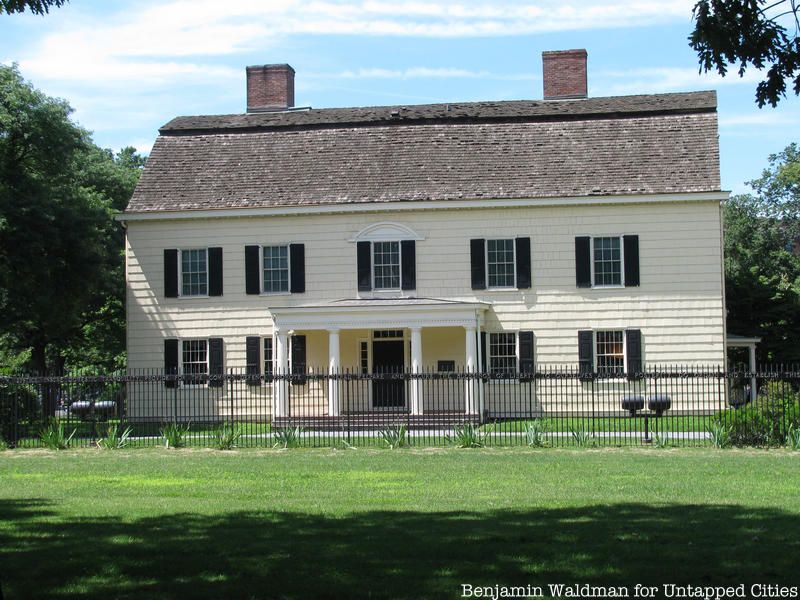
Home to some of the oldest structures in all of New York City, the borough of Queens is a treasure trove of historic buildings and the fourth in our series on the oldest buildings in New York City (previous so far: Brooklyn and Manhattan). Queens holds structures that have existed for almost four centuries – many which hold titles for oldest building in various categories not only in New York City but in the country – and played parts in key historical moments in the nation’s history.
From the oldest existing dwelling in the city, to an 18th century farmhouse, to homes that played a vital role in the struggle for religious freedom in the United States, here are the top eight oldest buildings in Queens.

The Riker-Lent-Smith homestead, a Dutch-Colonial style house located in East Elmhurst, holds the title for the oldest known dwelling in all of New York City that is still a residential structure. It is also the last remaining home of the Riker family and has been nearly continuously inhabited since its construction. Its current resident is Marion Duckworth Smith, who opens the house to visitors on occasion. Restorations on the house have revealed that the home began in 1654 as a one-room structure made of timber and fieldstone. The graveyard in the rear of the house contains 132 marked graves, including William James MacNeven, a renowned physician, and Irish revolutionary.
Research has traced the Riker family, the original owners of the homestead, to the First Crusades in 1096. The family was part of the community of early settlers in New Amsterdam, and the house itself was built by Riker-descendant Abraham Riker. Rikers Island, home to New York City’s main jail complex, is named after the Riker family, who owned the island until 1884. You can read more about the Riker-Lent-Smith Homestead here. The Riker-Lent-Smith Homestead is located in 78-03 19th Road, East Elmhurst
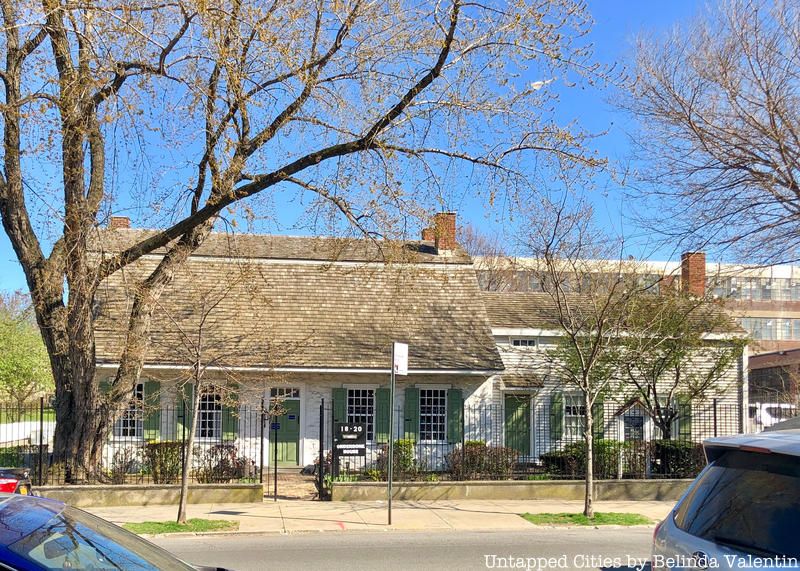
Built just seven years after the Lent Homestead, The Vander Ende-Onderdonk House is one of the oldest buildings in Queens and holds the distinction of the oldest Dutch Colonial stone house in New York City. Located in Ridgewood, on the border of Queens and Brooklyn, the house has architectural features traditional to the period, including a wooden-shingle gambrel roof, Dutch doors, brick chimneys, a central hallway and double-hung windows.
The original house was built in 1661 by Hendrick Barents Smidt, but the house on site today was built in 1709 by Paulus Vander Ende. The building was once used as a marker in the 1769 survey and settlement dispute over the boundary between the Kings and Queens counties, and a boulder on the site, called Arbitration Rock, was actually used throughout the 19th century as the formal marker delineating the border between Brooklyn and Queens (though it was moved from the location in which it was originally found). The Vander Ende-Onderdonk House is now a museum open to the public, exhibiting archeological items from the site itself. The Vander Ende-Onderdonk House is located in 1820 Flushing Avenue, Ridgewood
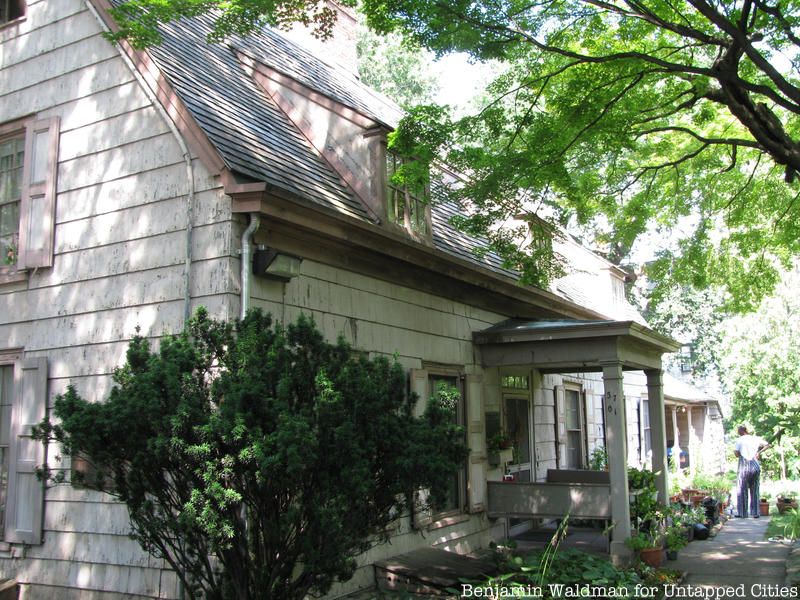
Located in Flushing, The John Bowne House is an Anglo-Dutch Colonial saltbox with a wood-frame, three dormers and a steeply pitched roof. Built in 1661, the Historic House Trust describes The John Bowne House as “a microcosm of social, cultural and political history,” and the home and its inhabitants played vital roles in the fight for religious tolerance in the United States, as well as the struggle for racial freedom.
The original owner, John Bowne was arrested for holding a Quaker meeting in the house in 1662, a time when any such activity was forbidden by law. He successfully appealed his arrest to the Dutch West India Company, and his actions contributed to future guarantees of religious freedom and speech, including the creation of the First Amendment, more than a century later. John Bowne’s great-grandson, Robert Bowne, was a well-known abolitionist, forming the Manumission Society of New York, which included influential members such as Alexander Hamilton. Robert Bowne’s niece, Mary Bowne Parsons, and her husband Samuel Parson were also both documented to have helped in facilitating slaves in their escape to freedom while living in the house. The John Bowne House has now been a museum for over 70 years, with a collection of around 5,000 items original to the house and family, including decorations arts, furniture, and correspondence. The John Bowne House is located in 37-01 Bowne Street, Flushing.
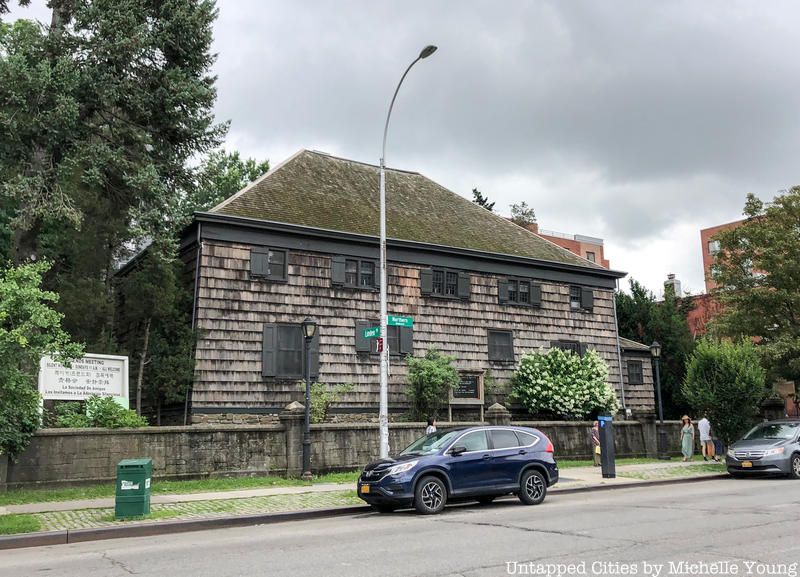
The Old Quaker Meeting House, built in 1694, has been used by the Flushing Meeting of the Religious Society of Friends as a house of worship for over 300 years. It’s not only one of the oldest buildings in Queens, but it’s also the second oldest Quaker meetinghouse in the nation. The building’s structure is unique in its design: it has an extremely steep hipped roof, traditional of the roofs of medieval Holland. Its inside remains simple: dark floorboards, plain benches and hand-hewn timber ceiling beams.
Like the John Bowne House, The Old Quaker Meeting House played a crucial role in the struggle for religious tolerance (and it was, coincidentally, also built by John Bowne). It’s the site where the Flushing Remonstrance was written in 1657, one of the oldest demands for religious freedom in America. It was also part of the abolition movement in New York, and its graveyard contains many early prominent Long Island families, including John Bowne and his family. The Old Quaker Meeting House welcomes everyone to come worship with them every Sunday at 11:00 AM, and there are tours of the building and graveyard every Sunday at 12:00 PM. The Old Quaker Meeting House is located in 137-16 Northern Boulevard, Flushing.
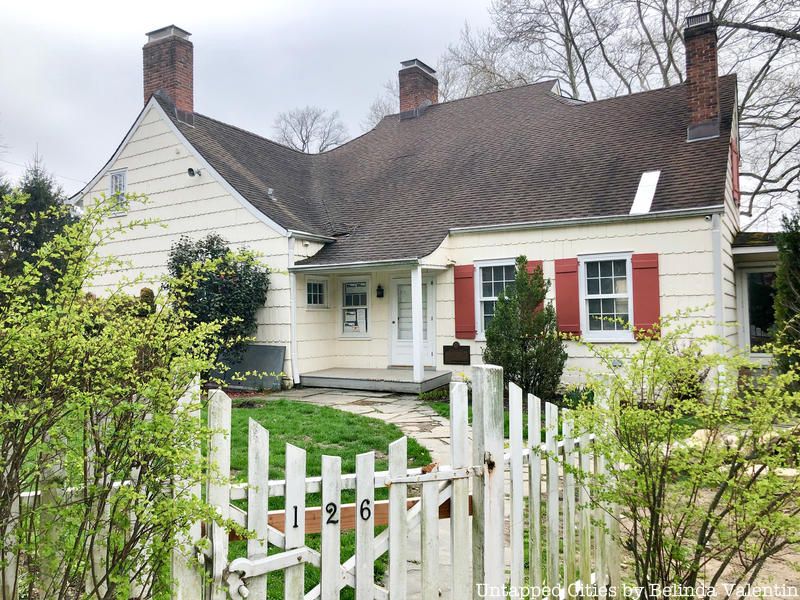
Facing Little Neck Bay on Long Island, the Cornelius Van Wyck House in Douglaston is an example of eighteenth-century Dutch Colonial, with its saltbox roof and hand-hewn shingles. The living room is decorated with Georgian mantelpieces, and the house itself is surrounded by a landscaped property which includes a garden that leads down to the beach.
Cornelius Van Wyck, who built the original three-room structure in 1735, was a third generation Dutch American, and the house has been expanded several times since its construction. During the Revolutionary War, the Wyck House became a headquarter for the northern branch of the Continental Army, and the home was visited by renown officers like George Washington, Marquis de Lafayette and Alexander Hamilton.The Cornelius Van Wyck House is located in 126 West Drive, Douglaston.

King Manor takes its name from Rufus King, one of the first senators of New York, ambassador to Great Britain, an outspoken abolitionist and one of the signers of the United States Constitution. The original farmhouse, built in the 1750s, and its surrounding property were purchased by King in 1805, and him and his wife immediately expanded the house and property, enlarging the estate from 90 acres to 122 acres.
King, who had returned to the United States in 1803, after spending seven years in England, landscaped his property in a way that recalls the English Picturesque style, with its semi-circular drive and clusters of trees as decoration. The house, located in Jamaica in what is now Rufus King Park, works as a museum detailing the lives of Rufus, John Alsop King (Rufus’s eldest son) and their roles in the anti-slavery movement.

Occupying 47 acres of land in both the neighborhoods of Floral Park and Glen Oaks, The Queens County Farm Museum holds the title for both New York City’s largest remaining tract of undisturbed land and the longest continuously farmed site in the state (in operation since 1697). Built in 1772 by Jacob and Catherine Adriance, the farmhouse is a three-bedroom building of Dutch architecture. It was once the second-largest farm in Queens County and the highest in monetary value.
The Queens County Farmhouse now works as a museum that, as its website states, “exemplifies the 300-year history of agriculture and farming as a way of life and livelihood in Queens County.” The property contains, along with one of the oldest buildings in Queens: a greenhouse, an assortment of vintage farm implements, planting fields, livestock, and an orchard and herb garden. The Queens County Farm Museum is located in 73-50 Little Neck Parkway, Floral Park.

Located in Murray Hill, the Kingsland Homestead is another example of a typical 18th-century farmhouse like many of the oldest buildings in Queens. It’s built in the style of the “Long Island half-house,” which was once common in the area. Completed by the wealthy Quaker Charles Doughty in 1785, the Kingsland Homestead is two and a half stories, and characterized by its wide side hall and one-sided double parlors, as well as traditional Dutch-English features such as divided entry doors, a central chimney, round-headed quadrant windows and a gambrel roof.
The farmhouse has been moved two different times since its creation and now lies where the first weeping beech tree in America was planted in 1847. The homestead, called “Kingsland” because of its second owner and Doughty’s son-in-law, the British sea captain Joseph King, now operates as the headquarters for the Queens Historical Society and is open as a museum, with exhibitions on the borough’s local history and outreach programs. The Kingsland Homestead is located in 143-35 37th Avenue, Flushing.
Next, check out The Top 7 Oldest Buildings in Manhattan, NYC and The Top 11 Oldest Buildings in Brooklyn, NYC
Subscribe to our newsletter